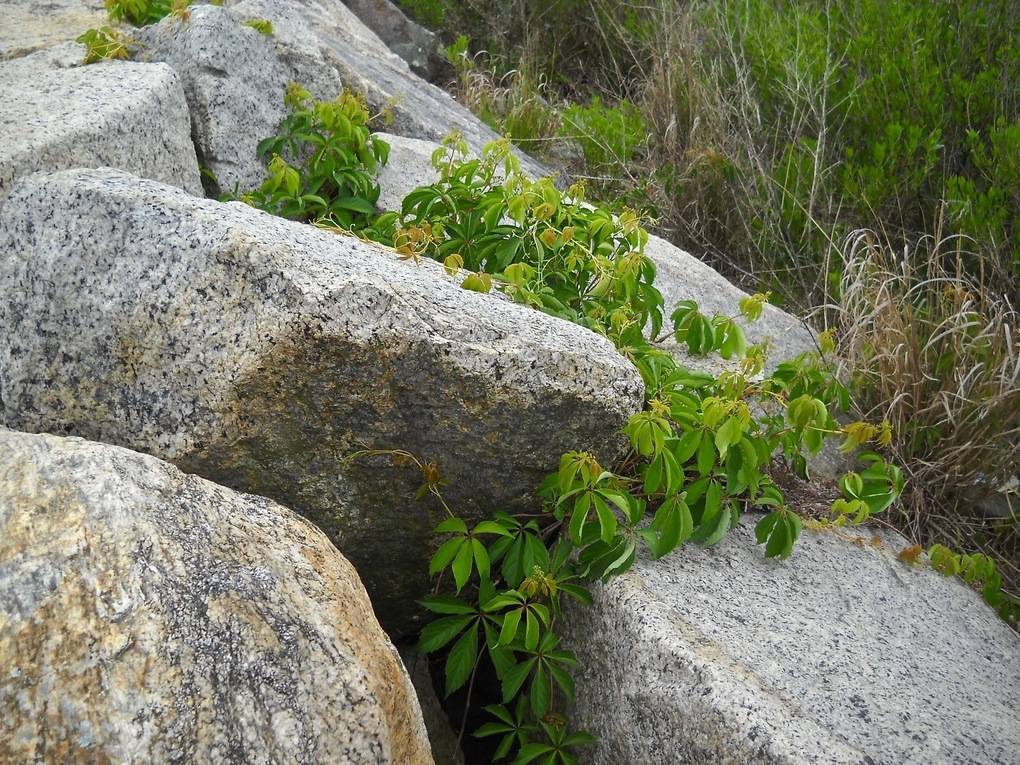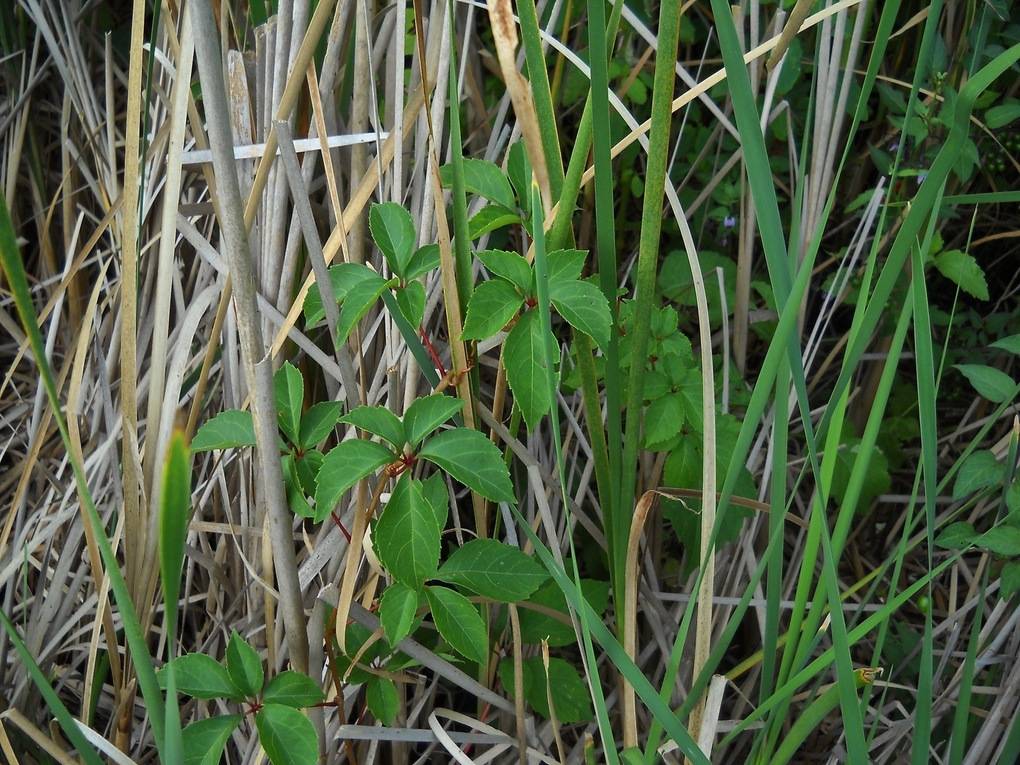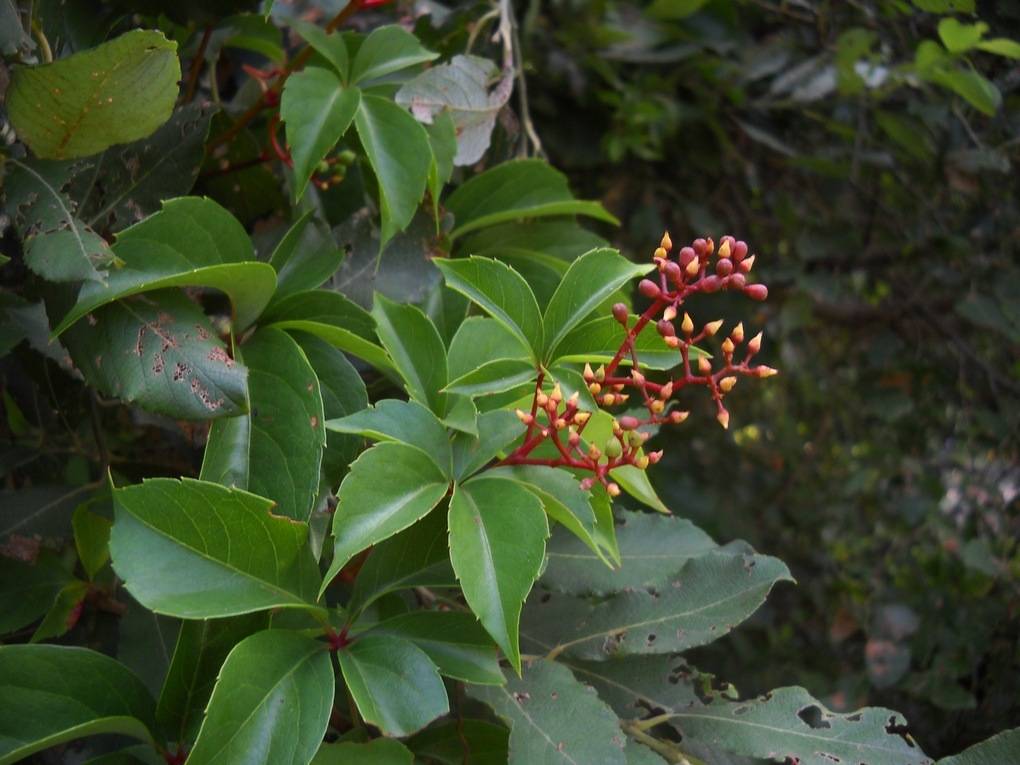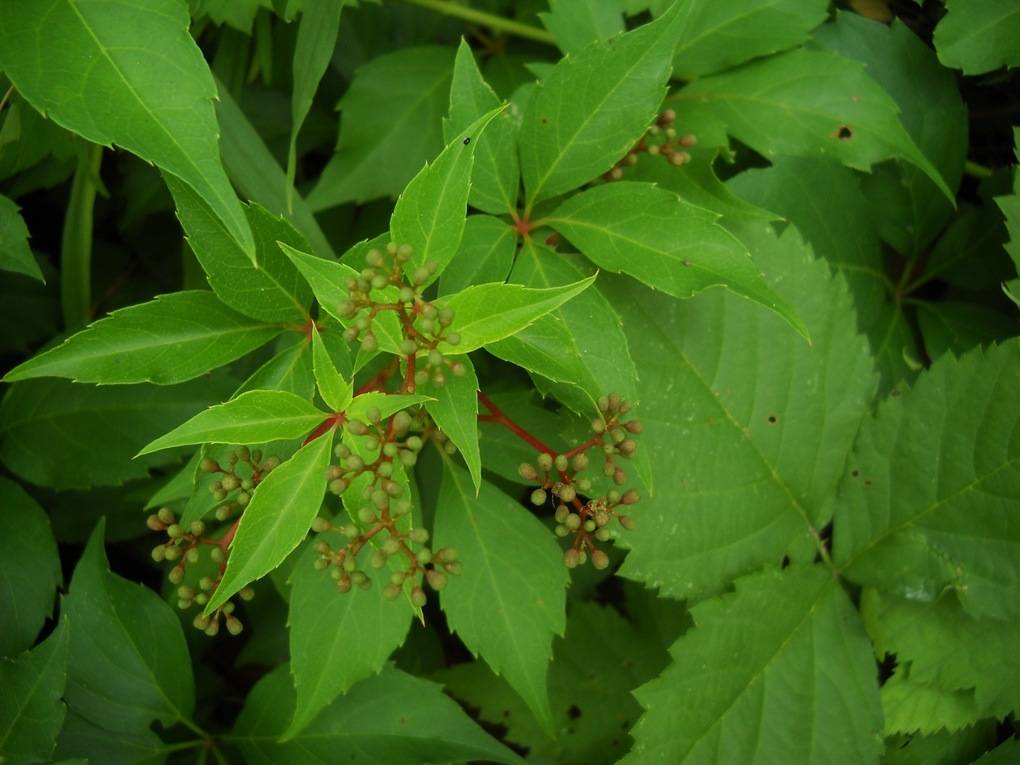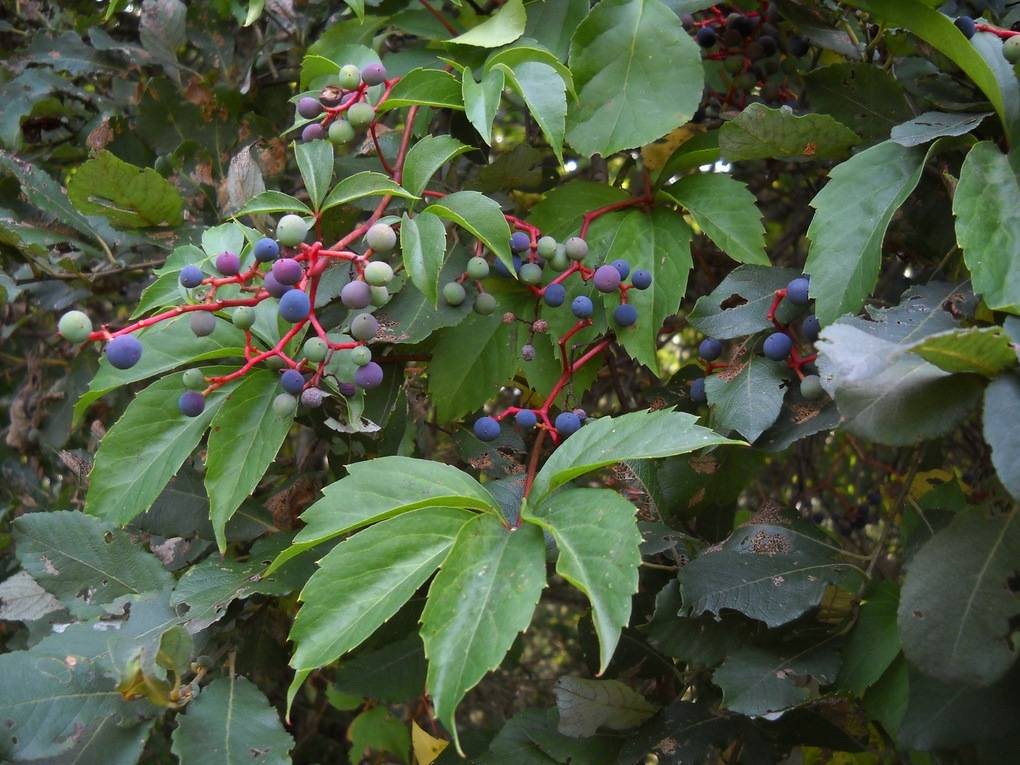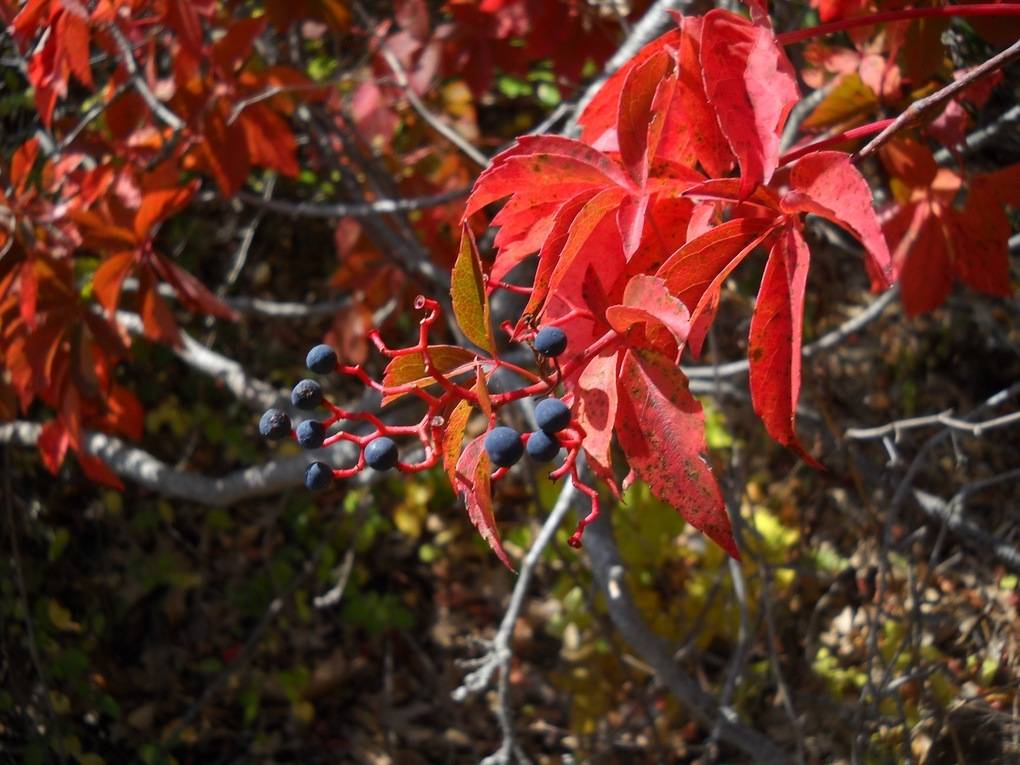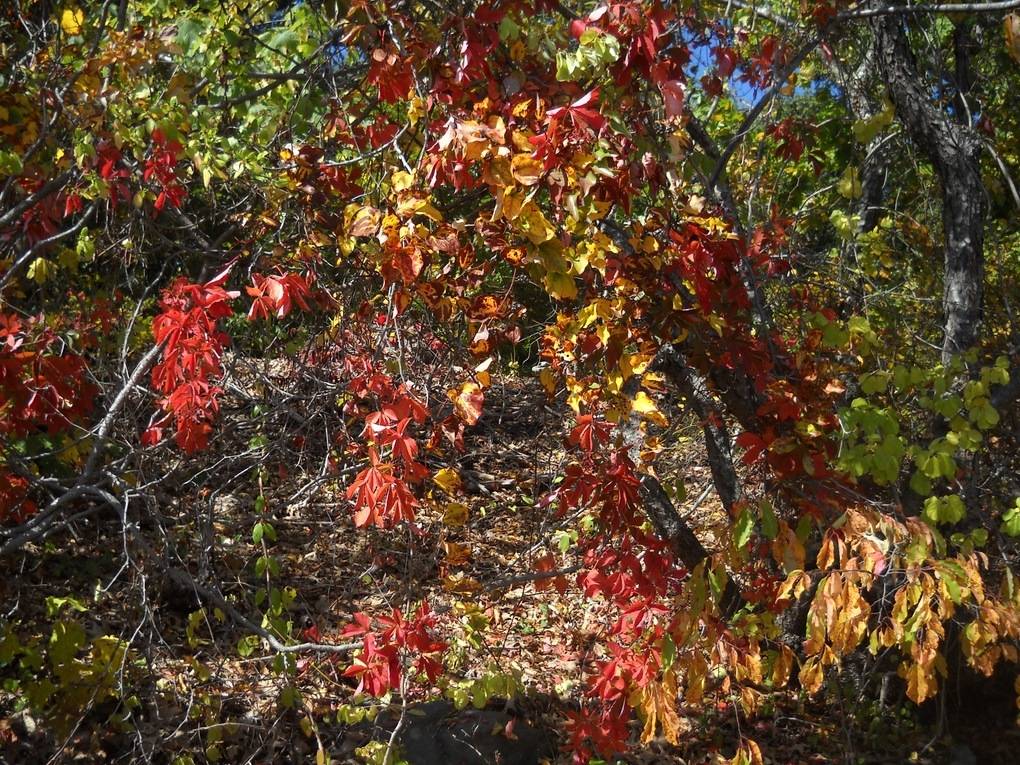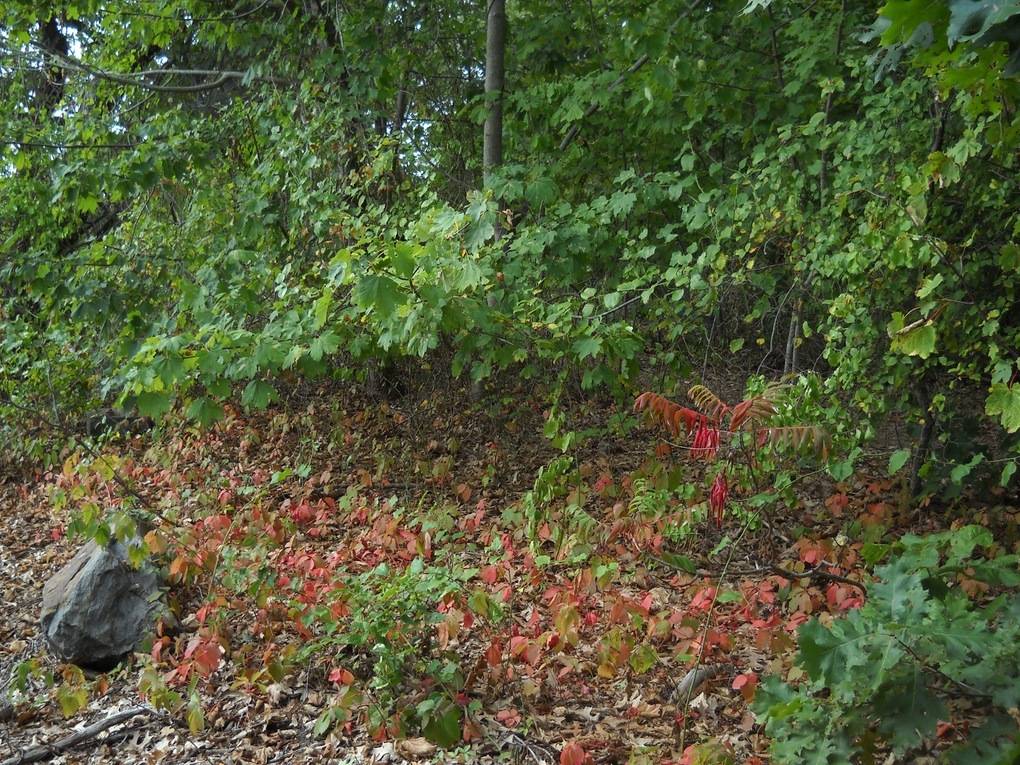Virginia creeper
Virginia creeper is a perennial, native to eastern and central North America, reaching as far south as Mexico and Guatemala. It is in the grape family and like all climbers will creep extensively across the ground where there is sufficient light.
It is found throughout Salter Grove, even amongst the rocks of the breakwater. Normally, it is not conspicuous because it has tiny green flowers and its leaves simply blend into surrounding vegetation. Individuals of Virginia creeper are probably easiest to distinguish in the fall when their leaves turn a brilliant red.
It is sometimes mistaken for poison ivy since they will often grow side-by-side in the same habitat. However Virginia creeper has a palmate compound leaf with five leaflets whereas the compound leaf of poison ivy has only three.
Virginia creeper does not contain urushiol, the chemical in poison ivy that causes long-lasting rashes and blisters. However, the sap in the creeper's leaves and stem contains needle-shaped crystals of calcium oxalate which can puncture the skin to cause irritation and blisters in sensitive people.
Virginia creeper has been used in Europe as an ornamental as well as to shade buildings because it is very adept at staying on walls and buildings with the adhesive pads at the tip of its climbing roots. However, it has been declared an invasive non-native in Great Britain because of its aggressive growth and its detrimental ability to shade out slower growing native plants.
The mature purplish-black fruits contain oxalic acid and can cause kidney damage in human but represent an important winter food source for birds. White-tailed deer and white cottontail rabbit browse the foliage and small branches.

